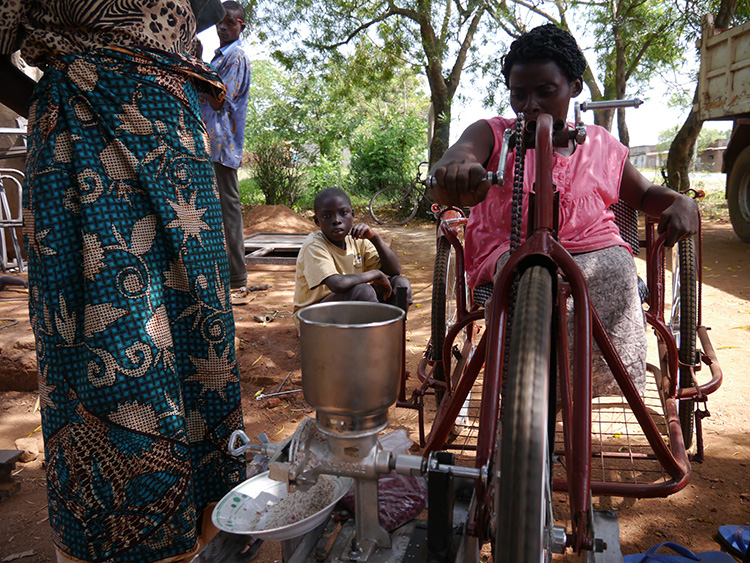
Adaptive tools is an accessory for tricycle wheelchairs in Uganda that transform it into an opportunity for independence and entrepreneurship. An important aspect of this project was in research and preparation for co-designing, developing, and testing in Uganda with local manufacturers and end users.
Together with CanUgan, a supporting NGO, the project's overarching objective is to promote independence through mobility and to take a hyper-local approach to design with and for persons with disabilities in Kasese, Uganda.
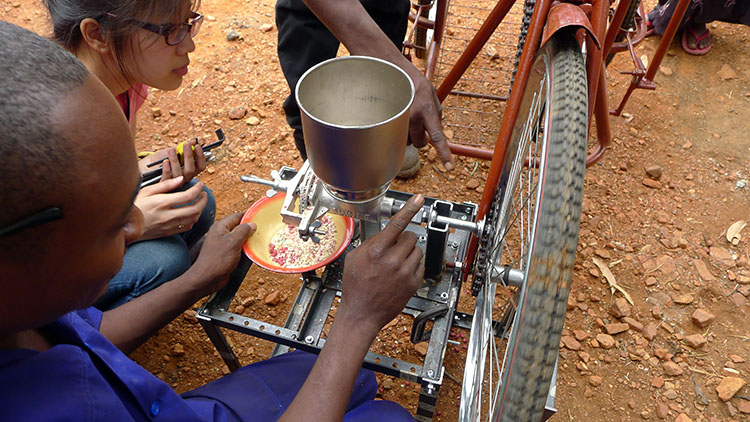
An intersection of culture and collaboration
In the rural district of Kasese, Uganda, persons with disabilities (PWD) use tricycle wheelchairs as a mobility aid. It is possible for these tricycles to extend beyond mobility and be used to power other tools and/or devices. We worked closely with individuals who are native to the context as they became our partners who guide the development process and own the results.
‘Working together’ instead of working for the disabled is a key element in the design process. Creating an open discussion, we learn the use of approriate technologies and gain a better understanding of local context and culture.

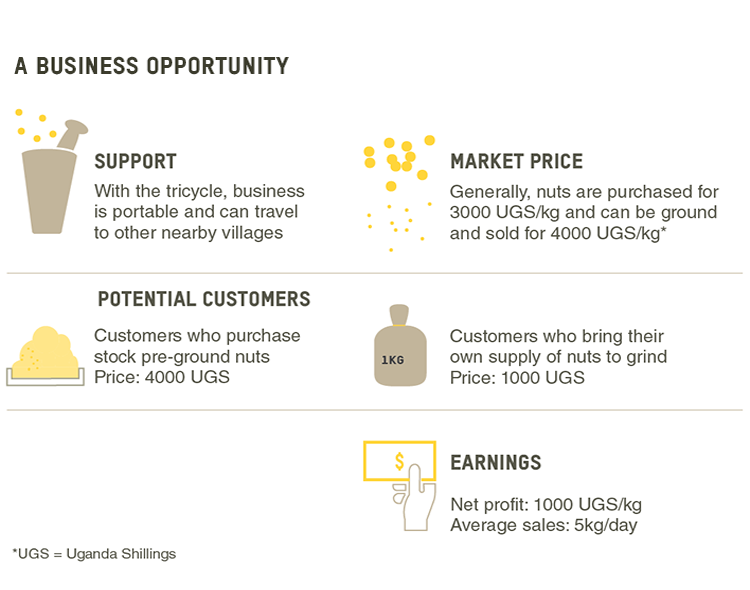
Beyond tricycle mobility
With increased mobility, PWDs can travel to the market, start businesses, visit friends, and help out with basic everyday family tasks. These open up pockets of revenue for them.
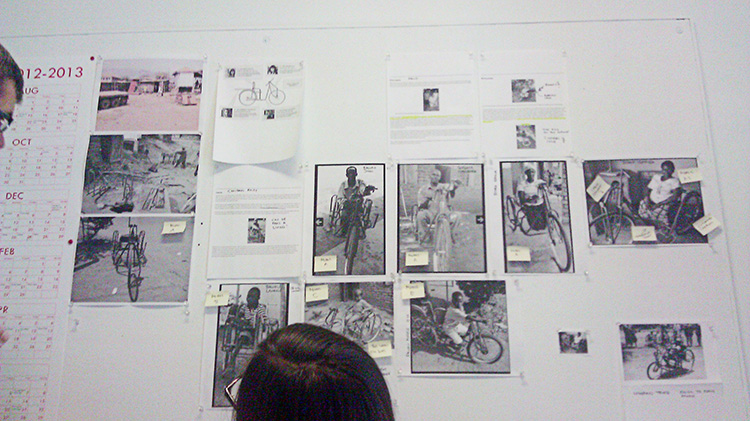
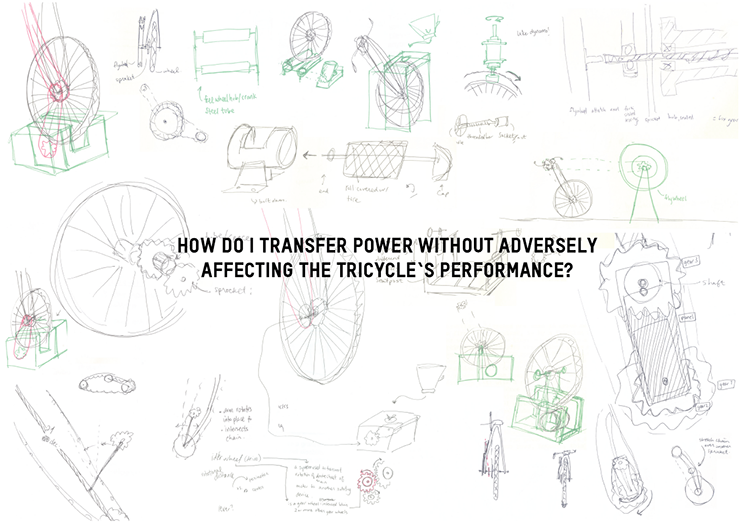

Exploration and prototyping
Exploration was divided among context and technical details. It was important to prepare a conceptual prototype that was easy to understand in order to create an effective and productive dialogue. Many quick prototypes were built to test and understand different ideas. Since the tricycle wheelchair is disabled individual's main asset. The focus here was to find a balance between performance, low cost, local parts, and usability for a disabled person.
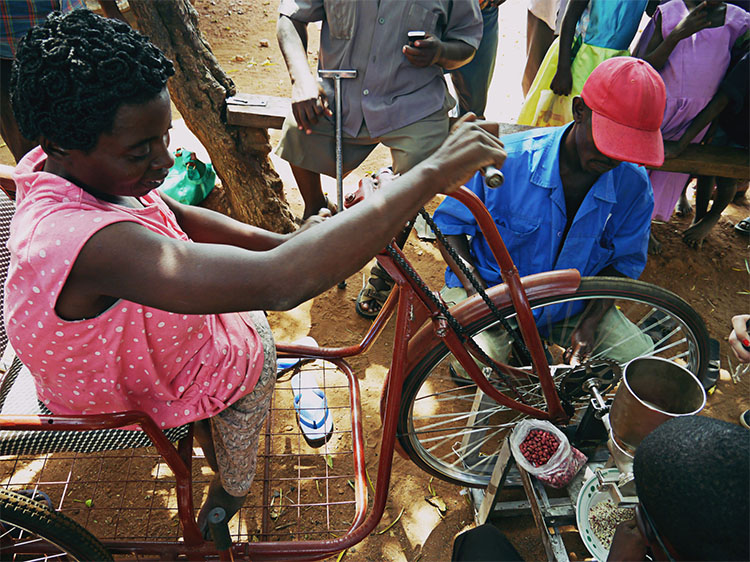
Testing
A working model was designed and brought to Uganda for testing. This phase was mostly executed in Uganda with end users using the working model and providing feedback while making changes in real time. Working closely with the manufacturer, we discussed ways to fix issues for future iterations. The results gathered from testing identified critical features that drove the final design.
The field notes photo summary of the Uganda trip can be viewed here.
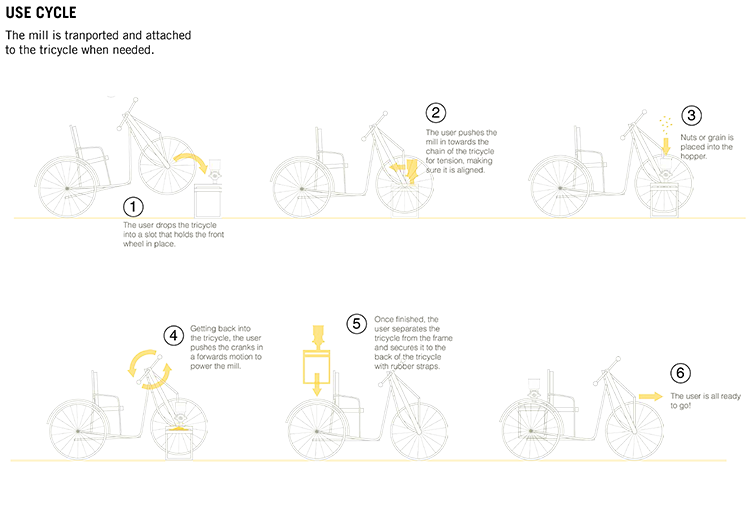
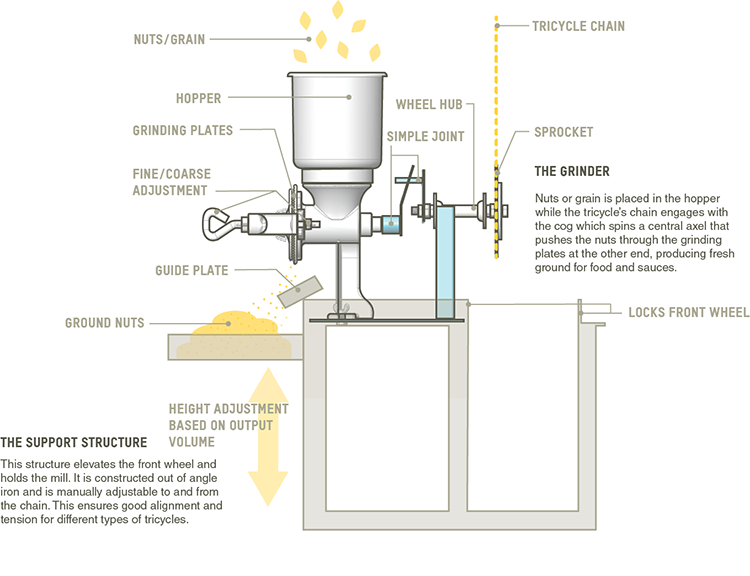
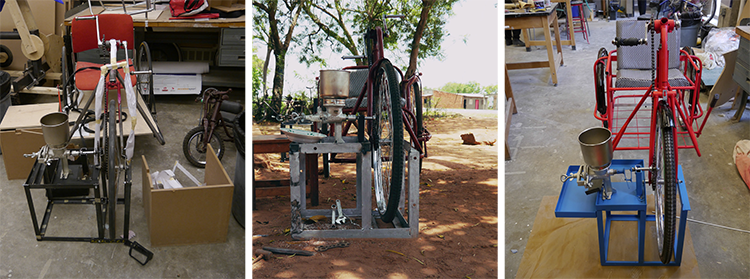
Final design
The final design was based on iterations from a previous model built in Uganda with Kio. The key part is being able to take power off the tricycle and transfer it to something else that doesn't require precise parts to function. As the design is made to be adaptable to different tools, it is purposely left open for local innovation.
View the final report [2mb] here.